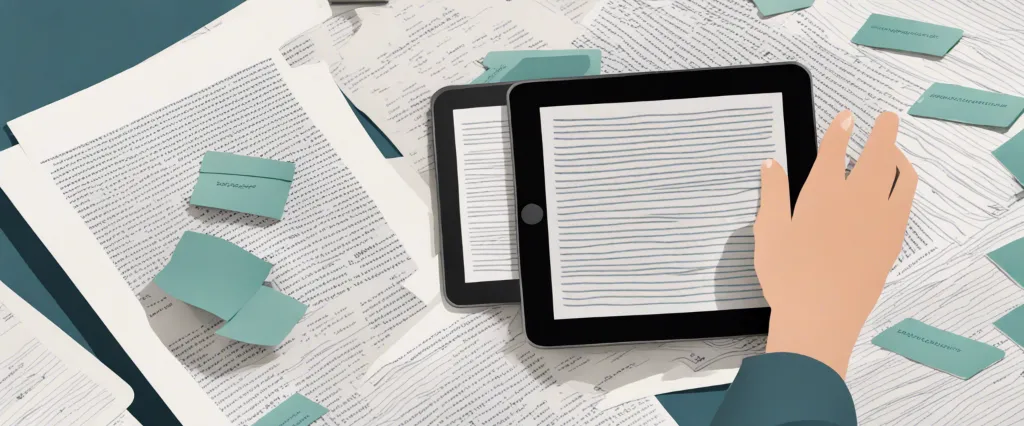
In today’s fast-paced world, the constant bombardment of information and distractions can make it challenging to stay focused and productive. In their respective books, “Bit Literacy: Productivity in the Age of Information and E-mail Overload” by Mark Hurst and “Free to Focus: A Total Productivity System to Achieve More by Doing Less” by Michael Hyatt offer insights and strategies for effectively managing our time and attention in order to maximize our productivity. Both authors tackle the issue of information overload and provide practical solutions for readers looking to streamline their workflow and achieve their goals. This comparative study will explore the key principles and techniques outlined in each book, examining how they address the challenges of modern-day productivity and offering a critical assessment of their effectiveness in helping individuals reclaim their focus and achieve success.
Brief Summary of Two Books
Bit Literacy by Mark Hurst
In “Bit Literacy: Productivity in the Age of Information and E-mail Overload” by Mark Hurst, the author provides valuable insights and strategies for managing the overwhelming amount of digital information that bombards us on a daily basis. Hurst argues that our current systems for organizing and processing digital information are outdated and inefficient, leading to stress, distraction, and decreased productivity.
He introduces the concept of “bit literacy,” which is the ability to effectively manage and control the flow of digital information in our lives. Hurst emphasizes the importance of simplifying our digital environments, decluttering our inboxes, and implementing effective strategies for managing tasks and projects. He provides practical tips for organizing files, emails, and tasks, as well as strategies for prioritizing and quickly processing incoming information.
Hurst’s book is a valuable resource for anyone feeling overwhelmed by the constant influx of digital information and looking for practical ways to regain control and improve productivity. By adopting the principles of bit literacy, readers can streamline their digital workflows, reduce stress, and ultimately become more efficient and effective in today’s information-rich world.
Free to Focus by Michael Hyatt
“Free to Focus” by Michael Hyatt is a productivity book that focuses on helping readers effectively manage their time and priorities in order to achieve greater success and a more fulfilling life. Hyatt argues that by eliminating distractions, setting clear goals, and prioritizing tasks, individuals can free up time and mental energy to focus on what truly matters. He introduces the “Full Focus” system, a holistic approach to productivity that includes strategies for goal-setting, time management, and achieving work-life balance. Through practical tips and insights, Hyatt offers a roadmap for readers to reclaim their time and achieve their desired goals.
Comparison between Two Books

Similarities in Time Management
Both Bit Literacy by Mark Hurst and Free to Focus by Michael Hyatt emphasize the importance of time management in order to be productive and efficient in today’s fast-paced world.
One similarity in the time management strategies shared in both books is the concept of prioritization. Hurst and Hyatt both stress the importance of identifying and focusing on high-priority tasks that align with one’s goals and values. By prioritizing tasks based on their significance and relevance, individuals can make better use of their time and energy, ultimately leading to greater success and fulfillment.
Additionally, both books highlight the importance of setting boundaries and establishing routines to maintain focus and avoid distractions. Hurst and Hyatt advocate for creating systems and workflows to streamline tasks and minimize time-wasting activities. By establishing clear boundaries and sticking to predetermined schedules and habits, individuals can optimize their productivity and make the most of their time.
Overall, Bit Literacy and Free to Focus offer valuable insights and practical strategies for effective time management, helping individuals to better manage their workloads, achieve their goals, and lead more fulfilling lives.
Divergences in Time Management
Both “Bit Literacy” by Mark Hurst and “Free to Focus” by Michael Hyatt address the issue of managing time effectively in the digital age. However, there is a key divergence in their approaches to time management.
In “Bit Literacy,” Hurst advocates for decluttering and simplifying one’s digital life in order to free up more time and mental energy. He encourages readers to streamline their digital tools and processes to avoid being overwhelmed by information overload. Hurst emphasizes the importance of prioritizing tasks and focusing on what truly matters, rather than getting bogged down by endless distractions.
On the other hand, Michael Hyatt’s “Free to Focus” takes a more comprehensive approach to time management, focusing on the three core aspects of productivity: clarity, capacity, and control. Hyatt provides a step-by-step framework for optimizing productivity by setting clear goals, increasing capacity through intentional rest and rejuvenation, and gaining control over one’s schedule through effective time blocking.
While both books emphasize the importance of managing time efficiently in today’s fast-paced world, “Bit Literacy” focuses specifically on digital clutter and simplification, while “Free to Focus” offers a broader perspective on productivity and time management. Ultimately, the divergence in their approaches lies in the level of detail and specificity in their strategies for maximizing productivity and minimizing distractions.

Conclusion
Both books have their own merits and can be valuable reads depending on the specific needs and goals of the reader.
“Bit Literacy” by Mark Hurst focuses on helping readers manage the overwhelming amount of information and digital distractions in their lives. It offers practical tips and strategies for organizing and prioritizing digital tasks, emails, and information, ultimately helping readers become more efficient and productive in their digital lives.
“Free to Focus” by Michael Hyatt, on the other hand, is more focused on time management and maximizing productivity in all areas of life, not just in digital tasks. It offers a holistic approach to time management, including strategies for setting priorities, eliminating distractions, and creating a balanced and fulfilling life.
Ultimately, the choice between the two books would depend on what aspect of productivity the reader is most interested in improving. If digital clutter and information overload are the main challenges, “Bit Literacy” may be the more suitable option. If overall time management and work-life balance are the main concerns, “Free to Focus” may be the better choice.


